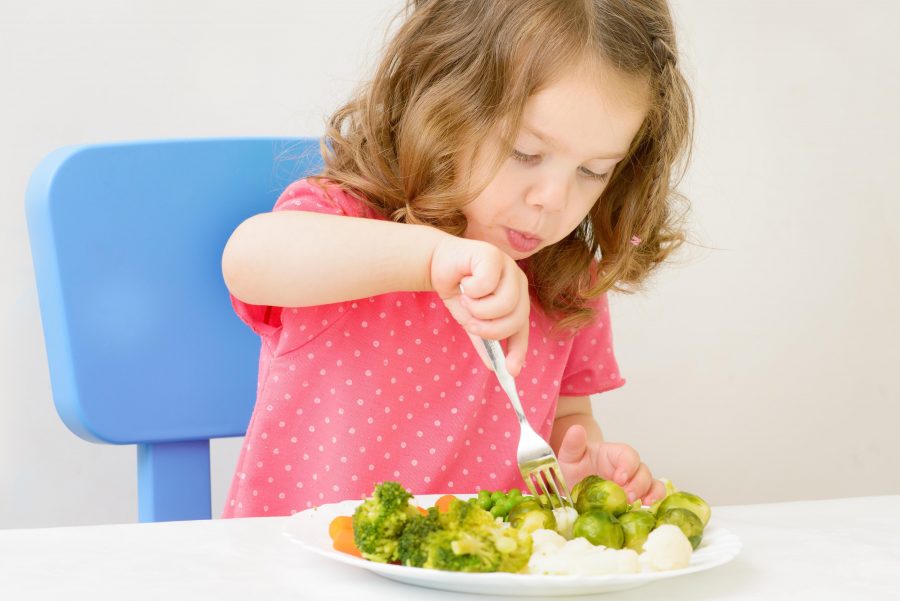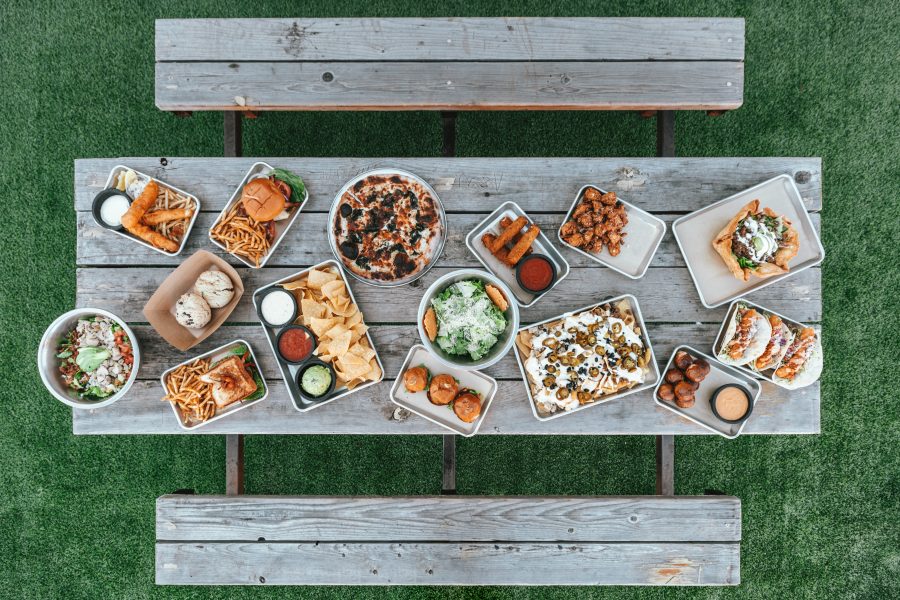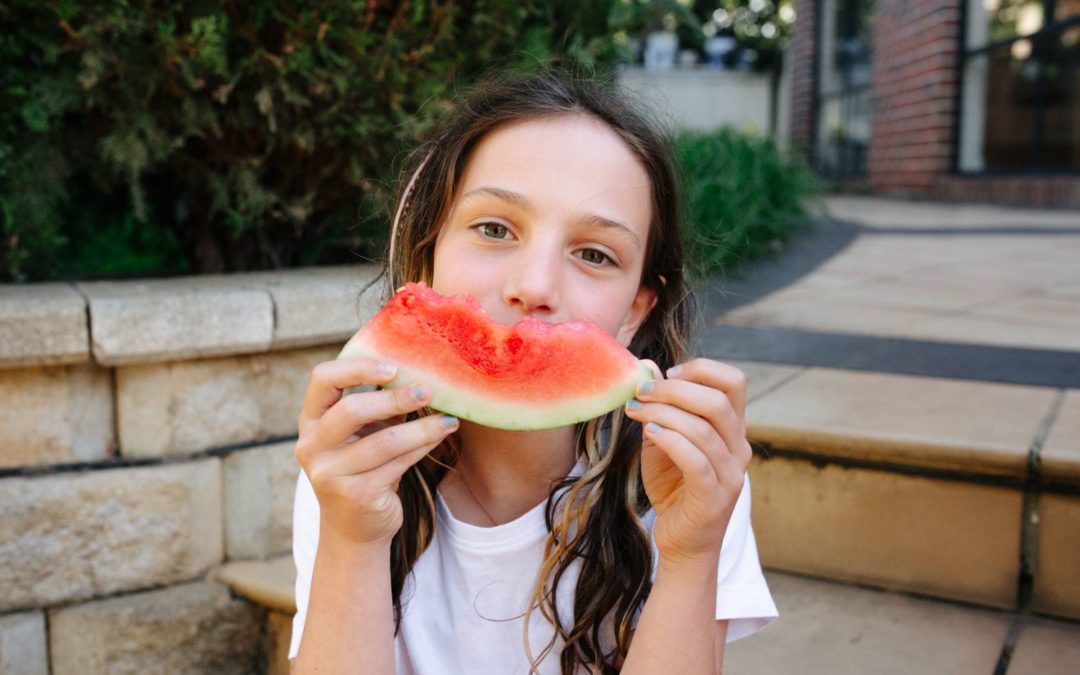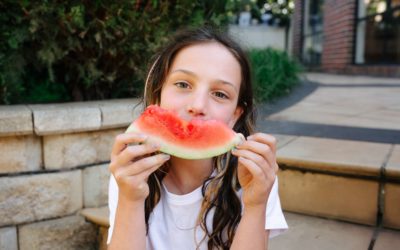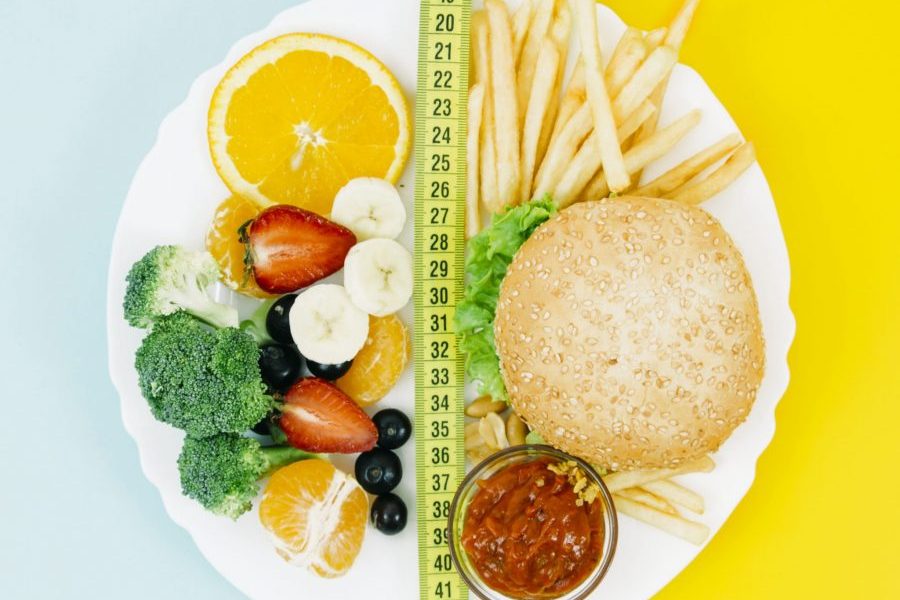Getting children to eat their veggies is hard. There are plenty of tips and tricks on the internet for getting kids to eat their greens. From hiding veggies to food rewards like “three more bites and you get dessert”. From restricting foods because your children will overeat if you don’t to sticker rewards. There are lots of strategies out there that might get kids eating their veg in the short term, but what are they teaching our children in the long term? These strategies, although well-meaning and coming from a place of total love, teach children that veggies need coercion to eat because they are not as ‘good’ or tasty as other foods. They also assume that children cannot trust their own body’s internal cues and that they are better or worse than others because of what they eat.
The thing is…there is a BIG difference between getting a child to eat their veggies (but they spit them out if you are not there or overeat ‘treats’ when you turn your back) and helping children learn to like veggies so that learn to choose them and enjoy them for life.
Firstly: fussy eating is not your fault. I repeat, what your child eats is not a reflection of how good a parent you are.
As parents, we are bombarded with messages that our children are not eating enough fruit and vegetables. We are surrounded by social media mums making museum-worthy lunchboxes (which is wonderful if you do but fine if you don’t) possibly making us feel a little inadequate (heck my kids are lucky if I cut their carrot up let alone into love hearts). It is easy to focus on single meals, on just getting just a few extra bites into our children, but is it that coercion helping or hindering their relationship with food?
The newspapers and academics keep telling us that 25% of children are overweight or obese (a figure that has actually been stable for the last few years interestingly) but we don’t often hear that 1 in 20 people suffer from an eating disorder (and up to 20% of females have an undiagnosed eating disorder). Children as young as 3 are influenced by dieting messages and awareness of body image. Now I don’t mean to scare you with these facts, but to show you that eating is about much more than how many serves of vegetables someone eats.
We need to widen our focus from a single meal to thinking about what happens in the long term. Because lovingly pressuring children to eat will only achieve short term ‘results’. And I want to help your children become long-term veggie lovers.
Do you like brussels sprouts?
Were you made to eat soggy brussels sprouts as a child and now you don’t really like them? I feel sorry for brussels sprouts because they are actually quite nice when cooked well (recipe here). But many of us have had too many negative experiences of them as a child to even try them now. So some people say you just need to get a child to try something 17 times and they will like it, but that is not true if they have been pressured to try and have had a negative experience with that food (exhibit a: brussels sprouts).
Dietary habits track, so what you do as a child predicts your eating and food preferences as an adult. Research also shows that children remember negative experiences more than positive ones. So what do we do?
Let’s turn to the research to guide us on how to help kids learn to love their veggies AND have a positive relationship with food:
Learning to like veggies takes time
Firstly you need to remember that learning to eat takes time, just like learning anything. We don’t expect toddlers to pick up a book and read fluently or be able to do algebra, well food also has to be learnt and practiced. Give children time to learn about food. To see it, smell it, play with it and try it when they are ready. Like learning anything, some children are faster at it than others, and that’s okay. Read more about the food learning journey.
Build positive Experiences
Repeated exposure to foods can positively change a child’s preference for a food and the amount they will eat of that food. Involving the child in food preparation, shopping, growing, cooking makes the child more willing to try new foods. These skills also track into adulthood. So read about food, do arts and craft. Role model at the table and help your children build on their positive food experiences.
Give children some control over their intake; eating is a shared responsibility
Parents provide, children decide. Sharing responsibility not only helps children’s thirst for some control in their lives, it also shows them that you trust them to make food choices. As a parent or carer you provide food at regular intervals. But it is up to the children to decide whether and how much. We need to trust our children.
Help children eat for internal reasons (why I don’t praise my children for eating)
If we pressure a child to eat, they are eating to appease us and not trusting their own bodies in feeding themselves. Over praise is a form of pressure, as they are eating to please me. And what if I say “well done Lily, you ate all your meal” or “I’m so proud of you Oliver for trying your meat”, how does that make Sam feel as he is not yet ready to try his broccoli but he was brave enough to put it on his plate.
Children are born intuitive eaters, let’s do everything we can to keep this precious skill intact.
Restriction leads to eating more
It is common for me to hear “but I have to restrict them or they will over eat.” But how will children learn self-control without practice?
And the research is very clear on this. Controlling approaches to children’s eating e.g. pressure and restriction can have a negative impact and lead to the opposite of the outcome intended.
Children who experience imposed food rules such as restricted intake, encouraging food intake and controlling behaviour with food may have negative effects later on in life.
Avoid labeling foods as bad or good
In your own self-talk and in front of the children be careful how you label food. Bad, zombie or crap foods vs superfoods can be hard for children to properly grasp as they are abstract, not concrete definitions and mean different things to different people. Research also proves that when we label foods as ‘bad’ we feel ‘bad’ when we eat it and then are more likely to overeat it, creating an unhealthy relationship with food.
Even healthy and unhealthy can imply good and bad depending on how the words are used. Try hard not to apply emotion to foods (I know it is hard not too – more about food language and language swaps). You can teach children about sometimes and everyday foods by eating them sometimes and every day, there is no need to overly label them.
Avoid the use of food as bribery or rewards
Most adults remember having food bribes used on us as children: “finish your dinner and you can have dessert” “three more bites and you can leave the table” “you were a good girl today have a chocolate”. But unfortunately they are counter-productive. Research shows that using food as a reward for consumption increases the preference of the reward food and decreases the preference of the other food.
Family meals and role modeling
The best thing you can do for your children, in terms of food education, is to eat with them and show them you are enjoying the food. Create a calm, pressure-free environment with few distractions. Family meals can be one adult and the children (as it is not always possible for all members of the family to be present). Family meals improve a child’s nutritional intake, they are also proven to help children grow socially and academically.
Praise behaviours not eating
So if I don’t praise eating, what do I praise at the table? (cause I am not a total Grinch)
Praise manners and behaviour, not eating. If children are sitting nicely at the table, let them know. If they help you set the table, thank them. If they are talking nicely and behaving well at the table. Try not to comment on what or how much they have eaten. In our house, you have to come to the table at mealtimes, but it is your choice if you want to eat and how much. Because the table is about far more than eating.
What other language can I use at the table?
Conversations away from food are great. Use this time to reflect on the day. Did you help anyone? Were there any problems? Did anyone say something to make you laugh? If you want to talk about the food then stick to the senses. What colour is the food today? Did anyone hear that crunch the red capsicum make?
In conclusion, we need to start trusting our children and sharing the responsibility of feeding with them, so they can learn to become competent eaters.

